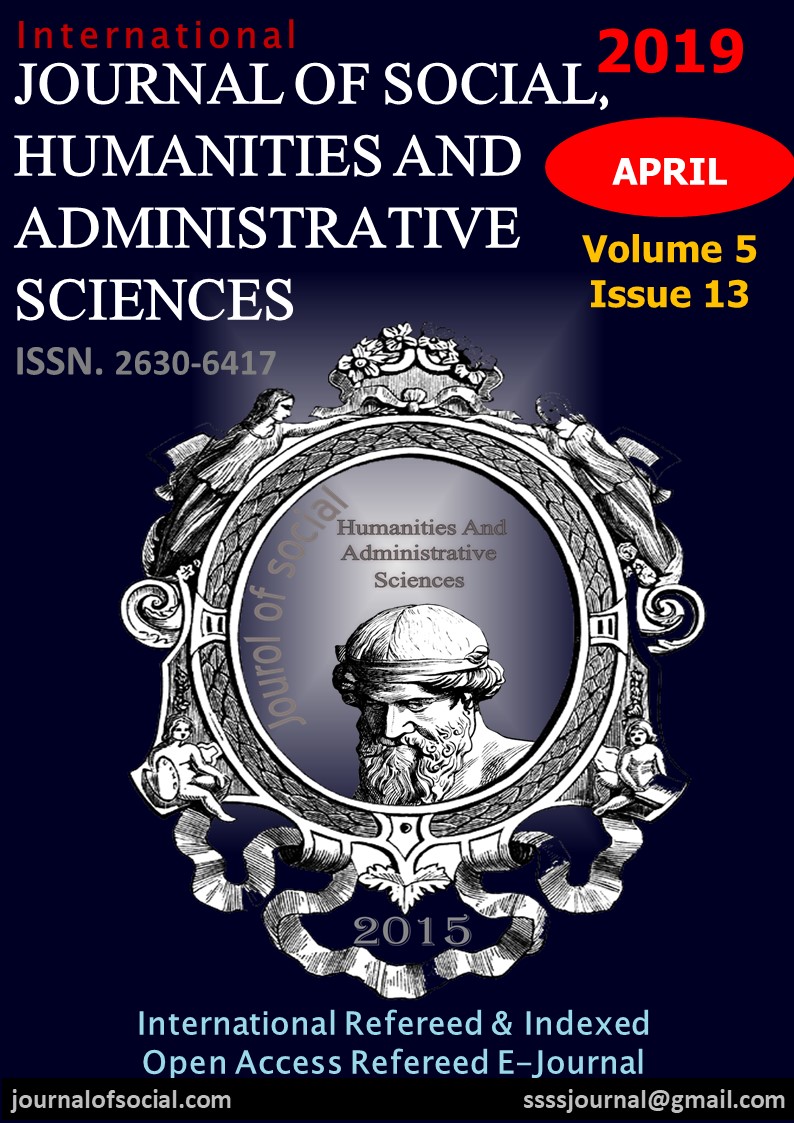Author :
Abstract
İpek yolunun varlığı geçmişten günümüze birçok toplumu ekonomik, dini, askeri ve sosyo-kültürel açıdan etkilemiştir. İpek yolu coğrafyasında kabul edilen dinler ve Türk topluluklarının benimsediği dinler, kültür-dil faaliyetleri ele alınmıştır. Çoğu kez İpek yolunun yeterli olmadığı zamanlarda kullanılan alternatif yolların varlığından bahsedilerek İpek yolunu tamamlayıcı özellikte olduklarını görmekteyiz. Çalışmamızın amacı İpek yolunun etkisinin günümüze kadar kalmasını sağlayan farklı dinlerin, dillerin, sanat ve zanaat faaliyetlerinin bir arada bulunmasıyla oluşan mozaiğin sergilenmesidir. İpek yolu ekonomisinin canlı kalmasındaki etmenler İpek yolu ekonomisini ayakta tutan toplumların dini ve kültürel yapısının kaynaşmasıyla olmuştur. Burada İpek yolunda inanılan dinler, kültürel faaliyetler, edebi eserler incelenerek İpek yolu ekonomisine sağladığı katkıları görmek hedeflenmiştir. Türklerin İslamiyet’in tesirinde kalarak yazdığı ilk eser ve onu takip eden eserlerin İpek yolu güzergahında yazılmasının önemine değinilmiştir. İpek yolu istikametinde ekonomik gücünü hissettiren Çin, Hindistan, İran, Türk devletleri, Mısır ve Roma’nın bu iktisadi yoldaki etkileşimleri günümüzde de önemini korumaktadır. Çalışmanın sonucunda İpekyolu’ndaki ülkelerin çeşitliliği o bölgelerin imkanını azaltmamış bilakis zenginliğini artırmış, uyumlu bir kültürel alışveriş sağlamıştır.
Keywords
Abstract
The existence of the Silk Road has affected many societies from the past to the present day in terms of economic, religious, military and socio-cultural aspects. The religions accepted in the Silk Road geography and Turkish the religions, cultural and linguistic activities adopted by their communities are discussed. We see that there are many alternative ways to be used when the Silk Road is not enough, and that they are complementary to the Silk Road. The aim of our study is to exhibit the mosaic formed by the coexistence of different religions, languages, arts and crafts activities that keep the Silk Road effect until today. The factors behind the survival of the silk road economy have been the fusion of the religious and cultural structure of the societies that maintain the Silk Road economy. The aim of this course is to examine the religions, cultural activities and literary works which are believed to be on the Silk Road. The importance of writing the first work written by the Turks under the influence of Islam and the following Works on the Silk Road route were mentioned. Chinese, Indian, Iranian, Turkish states, Egypt and Rome’s interactions on this economic path, which have felt their economic strength in the direction of the Silk Road, still maintain their importance today. As a result of the study, the diversity of the countries in the Silk Road did not diminish the opportunities of those regions, but increased their wealth and provided a harmonious cultural exchange.
Keywords
- Banarlı, N., S., (1998). Yüksek Zümre Edebiyatının İlk Yazarları ve İlk Eserleri, Cilt:1. Resimli Türk
- Banarlı, N., S., (1998). Yüksek Zümre Edebiyatının İlk Yazarları ve İlk Eserleri, Cilt:1. Resimli Türk Edebiyatı Tarihi. İstanbul: Milli Eğitim
- Bedirhan,Y.(1994).Orta Çağda İpek Yolu Hakimiyeti ve Türk Yurtları.(Yüksek Lisans Tezi)Selçuk Üniversitesi Sosyal Bilimler Enstitüsü, Konya
- Caferoğlu A. (2015). Türk Dili Tarihi. Ankara: Altınordu
- Devellioğlu, F., (2000). Osmanlıca Türkçe Ansiklopedik Lugat (17. bs., Cilt 1, 451. ss.). Ankara: Aydın
- Ercilasun, A., B. (2015). Başlangıçtan Yirminci Yüzyıla Türk Dili Tarihi. Ankara: Akçağ Kültür Bakanlığı
- Foltz, R.,C. (2007). İpek Yolu Dinleri. A. Aslan (Çev.). İstanbul: Medrese.
- Güngör,H. (2002). Eski Türklerde Din ve Düşünce. Türkler.(Cilt.3) Kayseri: Erciyes Üniversitesi İlahiyat Fakültesi.
- Güseri Okudan, Tarih Kritik, Cilt 4, Sayı 2, Nisan 2018, e ISSN 2149-8733 https://islamansiklopedisi. org. tr/ipek-yolu
- İmer, Z. (2005) Miladi Dönem Öncesi Asya’da İpek. Bilig,32,1-32Karadoğan, S. (Ed.) (2014). İslam Ekonomisi. İstanbul: Alioğlu
- Kefeli, A. E., Taşağıl, A., Karagür, N. S., Yılmaz, Ö., D.(2008). Dünden Bu Güne İpek Yolu Beklentiler ve Gerçekler. İstanbul: Ötüken Neşriyat
- Kırpık, G.(2012). Haçlılar ve İpek Yolu. Bilig, 61
- Köprülü, M., F. (1976). Türk Edebiyatında İlk Mutasavvıflar. Ankara: Türk Tarih Kurumu
- Lerusalimskaya A. A. (2002). İpek Yolunda Kafkaslar. Türkler.(Cilt.3) Rusya: Hermitage Müzesi Şarkiyat Bölümü
- Parlatır, İ., Zülfikar, H., Gözaydın, N. (1994).Okul Sözlüğü. Ankara: Türk Tarih Kurumu Tabakoğlu, A. (1996). İslam ve Ekonomik Hayat. Ankara: Gaye
- T. Yücel, (1987), Türkiye Coğrafyası, İpek Yolu Haritası





